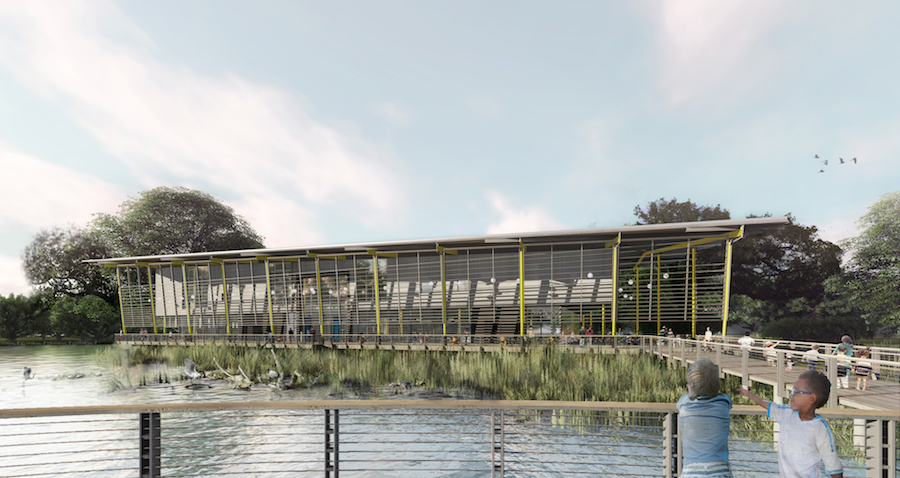Louisiana Children’s Museum on Track to Award Bid

Rendering courtesy of the Louisiana Children’s Museum
Louisiana Children’s Museum officials are finalizing an agreement with the presumed low bidder on the museum’s new site in New Orleans City Park. Speaking on June 5, LCM CEO Julia Bland said the museum recently completed the bidding process. “We hope to begin construction by mid-summer. We will have more details to share when the agreement is signed,” Bland says.
Roy Anderson Corp. of Gulfport, Miss., was the low bidder at a May 9 public bid opening, with a proposal of nearly $30.1 million for the design-bid-build project. The project budget at this time totals $37 million, which includes $29 million from the state and the remainder from private donations and funds raised by the museum, says Darren Williams, area manager for Vanir Construction Management Inc., the owner’s representative.
Officials broke ground on the new site on May 20, bringing to fruition plans set in motion after Hurricane Katrina to move the museum from its longtime home in the Warehouse District. Construction is expected to take 20 months.
The new campus will include five new indoor exhibit galleries, as well as a literacy center, a parent/teacher resource center, a museum store and a café.
The museum selected Seattle-based Mithūn as lead architect on the project after conducting a national search. Mithūn is providing architecture, landscape architecture and interior design services.
“Julia Bland and the Louisiana Children’s Museum really wanted to rethink the museum after Hurricane Katrina,” says Richard Franko, design partner with Mithūn. “Because that site was under 4 ft of water during Katrina, they wanted to create a building that would be resilient moving forward.”
The two-story steel structure will sit on an 8.5-acre site overlooking a lagoon. The facility is designed to engage outdoor play and its environmental location. Indoor and outdoor elements will include decks, bridges, sensory and edible gardens, a floating classroom and a restored interpretive wetlands area.
The 56,500-sq-ft facility will be the first LEED project in New Orleans City Park, with the goal of attaining LEED Silver Certification.
The building was carefully sited to work around the park’s mature live oaks, many of which are more than 100 years old. “It’s been designed from the beginning to have orientation that works well for solar shading and access to be respectful to some of the amazing trees on site,” Franko says.

